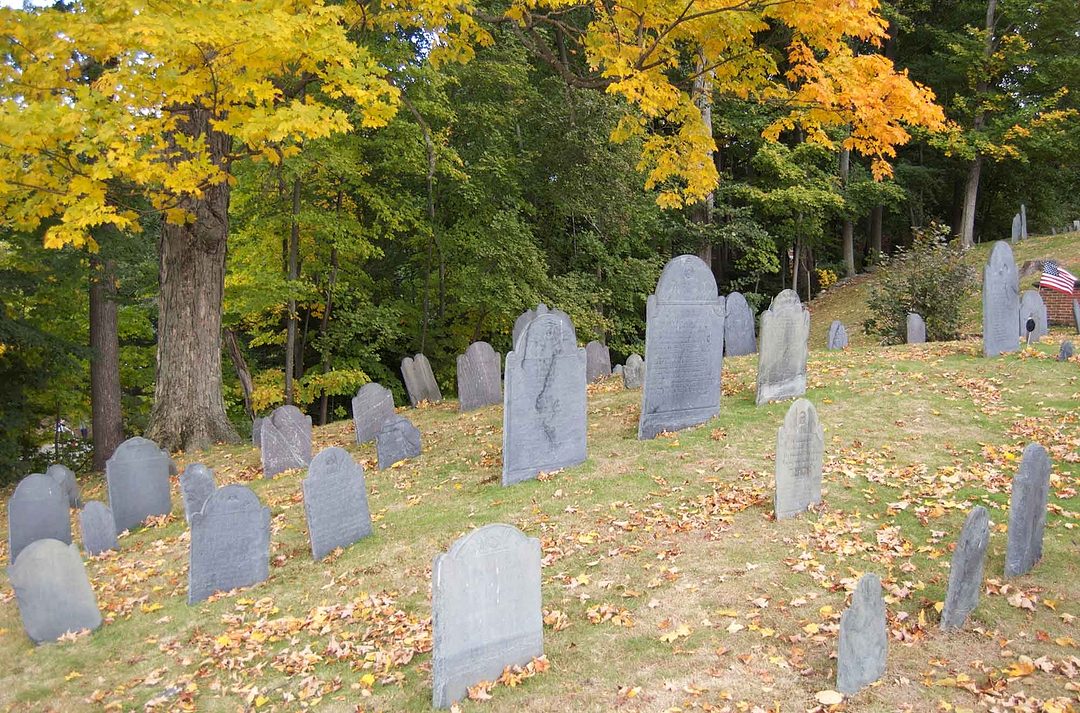Upon my first visit to the Old Hill Burying Ground, the first established cemetery in Concord, I noticed the trees hanging low over the gravestones. The branches looked heavy, as if they were too full of water. Each leaf dipped towards the ground, begging to fall, and when they did, I was shocked to see they fell gently. They looked so strange that I thought they would hit the ground hard like a weight. It’s odd the effect death has on the living things surrounding it.
The Old Hill Burying Ground certainly lives up to its name, with its first marked gravestone dating back to 1677 and its last not reaching the twentieth century. The headstones are so old that they jut out of the ground in jagged positions, with most of their writing illegible.
Many graves are unmarked because the cemetery was established during a time of great tension between the settlers and the Indigenous population. After the town was founded, the settlers did not want to appear weak to the native people, so they hid their deaths from them. Settlers would bury their dead in unmarked graves and make quick work of the burial.
However, within this graveyard of the nameless dead, there is a tomb that stands out. While there are many tombs on the grounds that house famous people, this one is unmarked. Many believe the town founder and ancestor of Ralph Waldo Emerson, Reverend Peter Bulkeley, is buried here with his family.
According to the town records of the local graveyards, in the 1960s, the Cemetery Committee of the time, comprised of Charlie Dee, Ruth Wheeler, Barr Wood, and Charlie Voigt, was commissioned to repair the mysterious brick tomb. The town records contain a letter from Charlie Dee to Ruth Wheeler describing the tomb’s contents. According to Dee, there were six coffins, but two were crushed under the weight of the caskets on top of them.
One coffin was large enough to accommodate a tall man. This is where Reverend Bulkeley may rest. Dee noticed that this particular coffin had a “square glass viewing hole,” which differed from the round ones found in the other coffins within the tomb. The tomb is also located near the church, which was a sign of importance, according to Ruth Wheeler.
Every sign points to this tomb housing a notable person like Reverend Bulkeley, yet it remains unmarked. It begs the question: Why go through the trouble of creating a tomb that cannot be done quickly and is certainly not hidden to leave it unmarked?
It is possible that the grave was marked, but it eroded over time, or perhaps, the ones that were buried wanted to be kept secret. What is left is a mystery that may never be solved.


